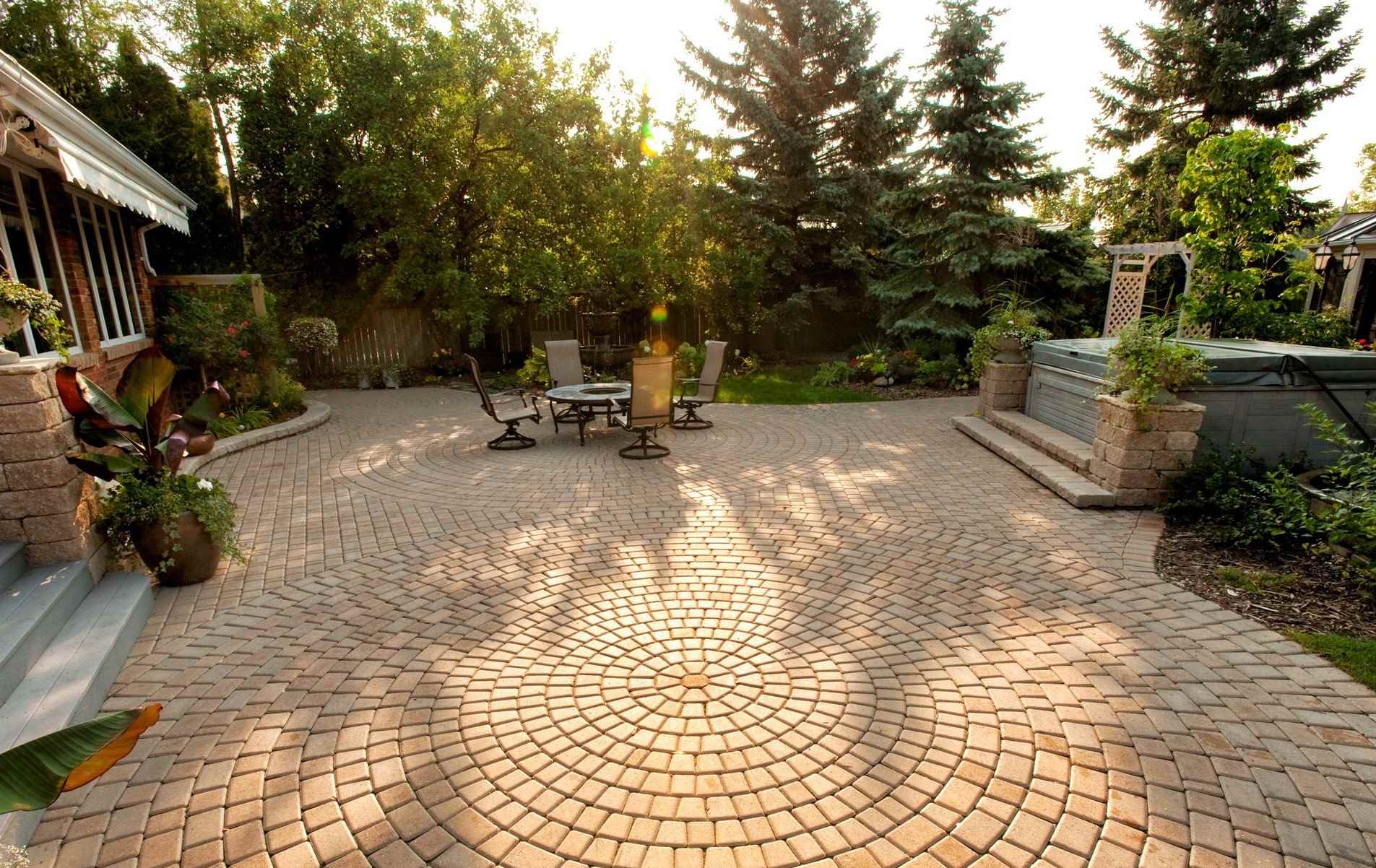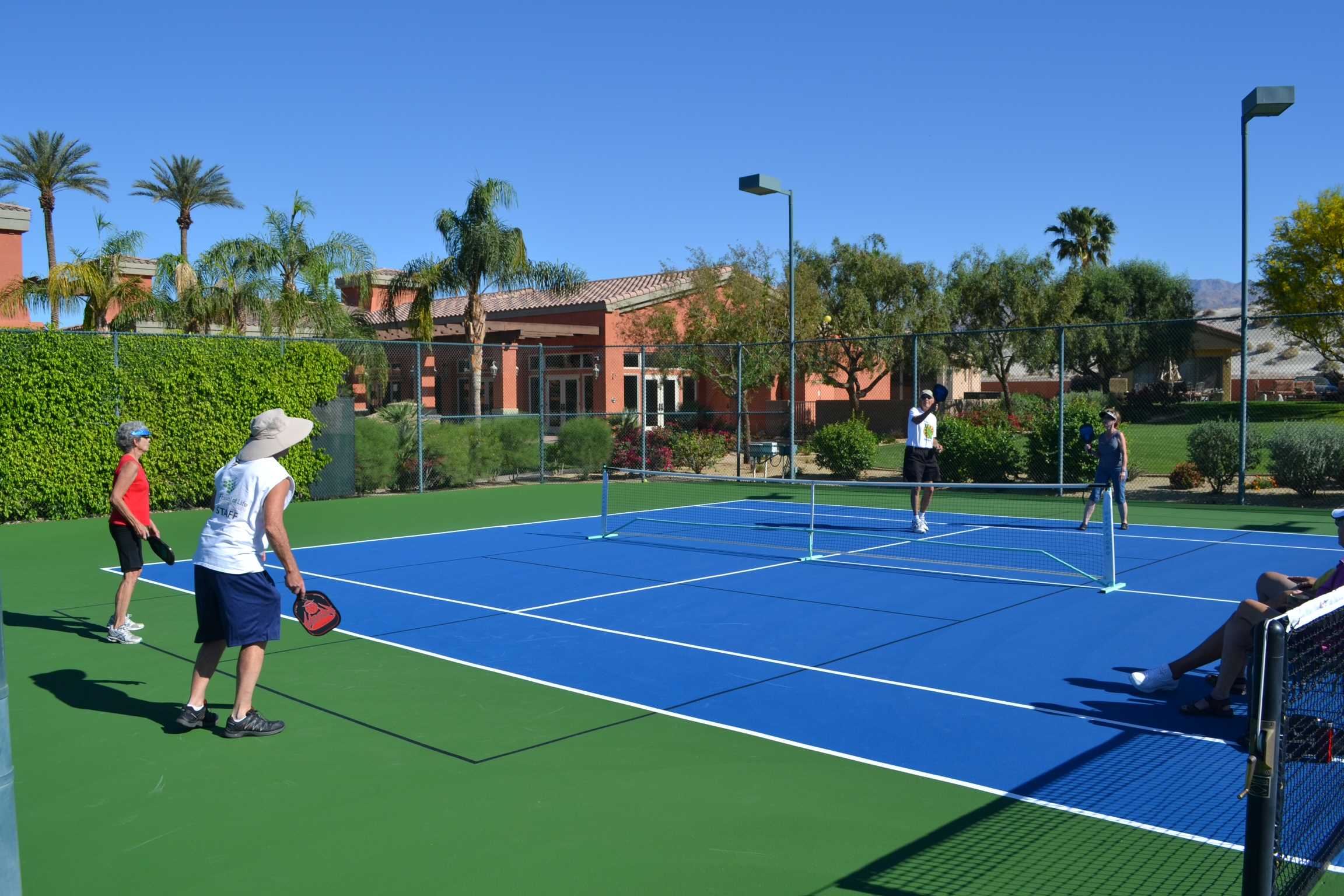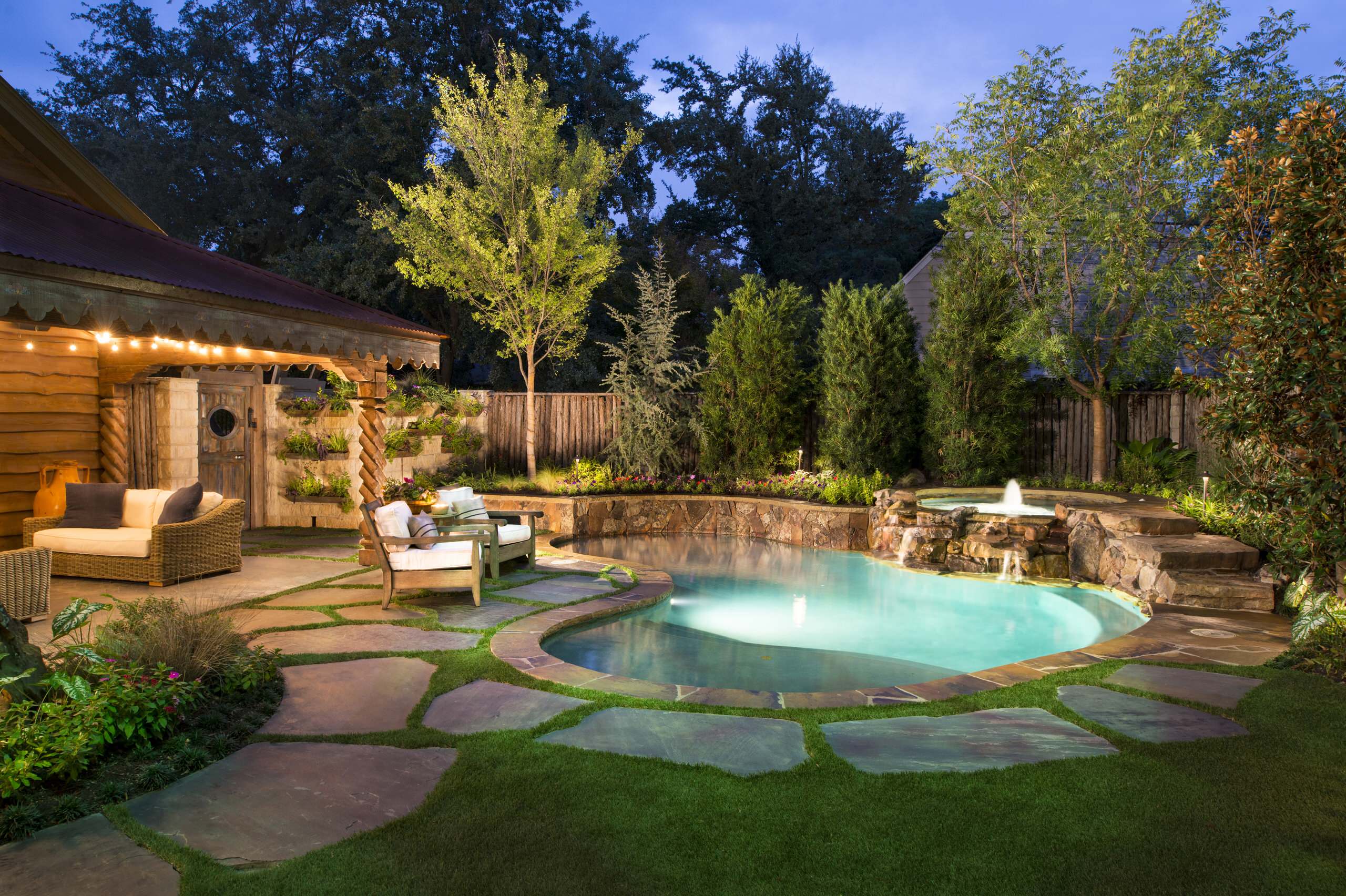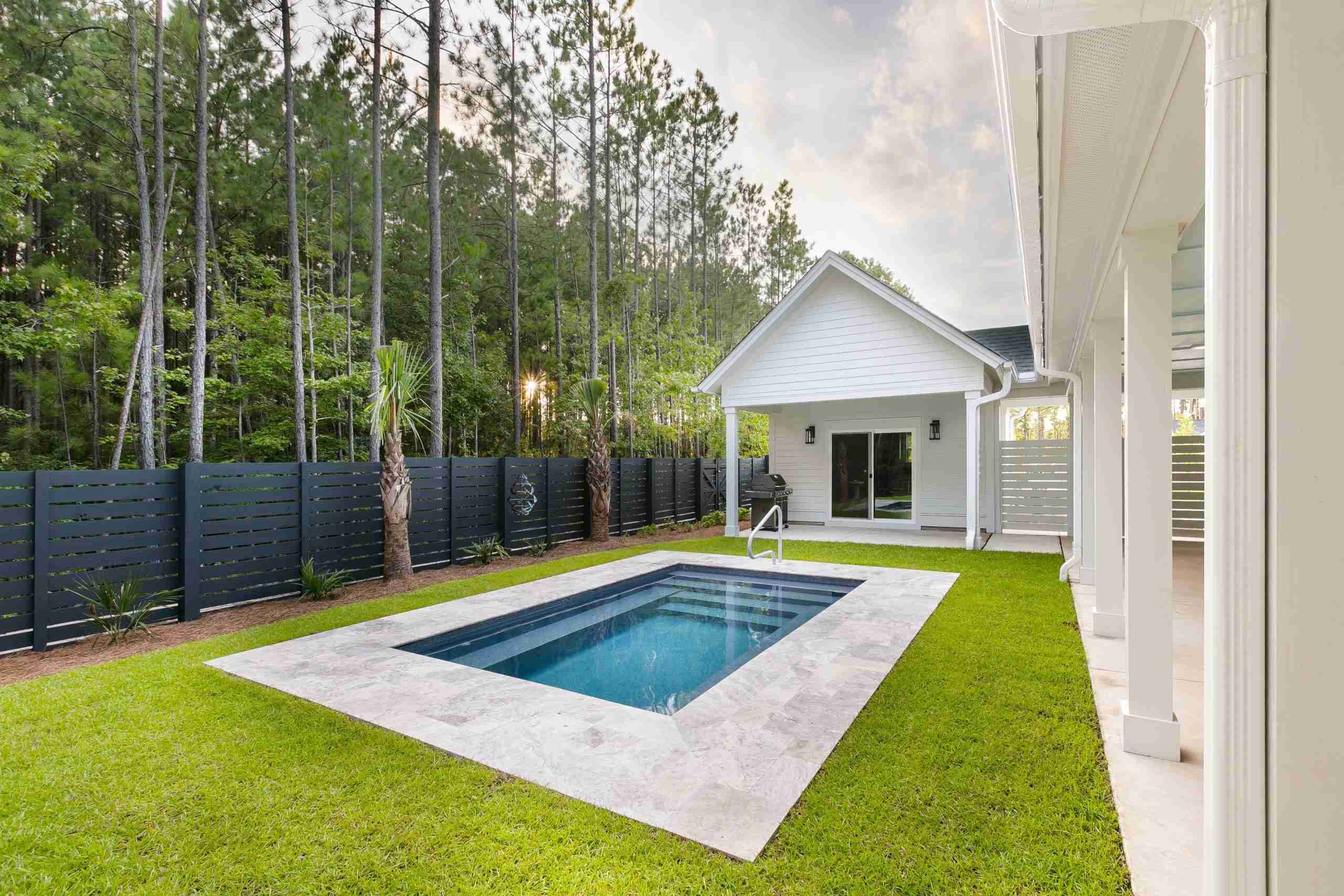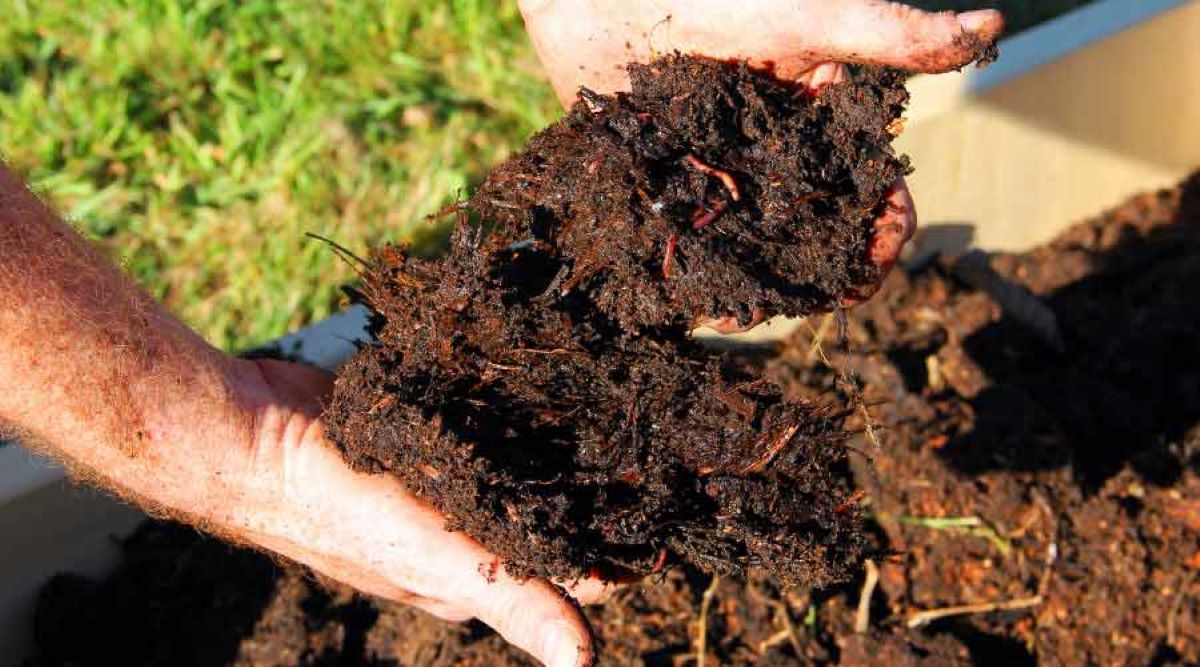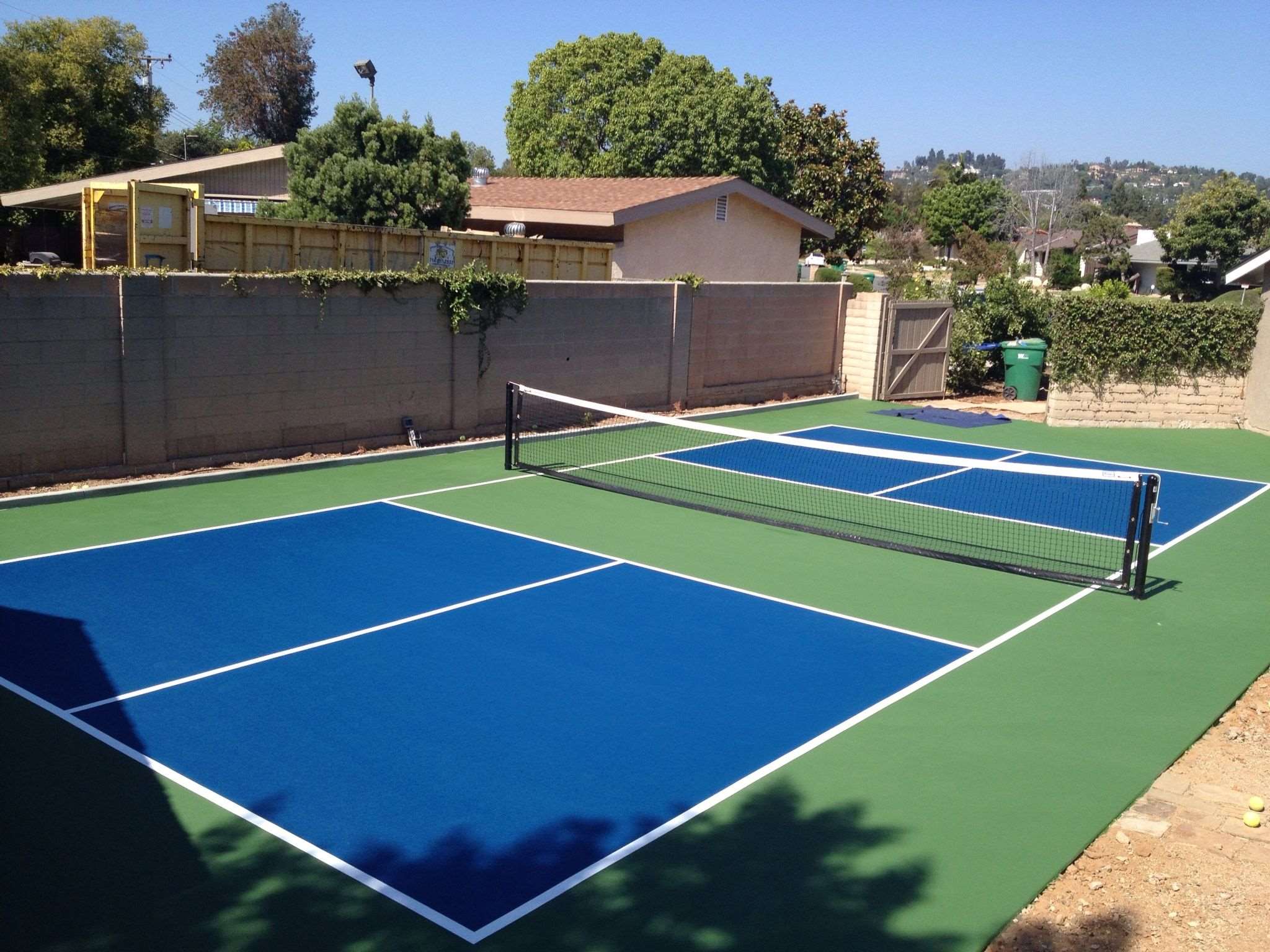Home>Garden Design>How Much Is It To Turf A Backyard
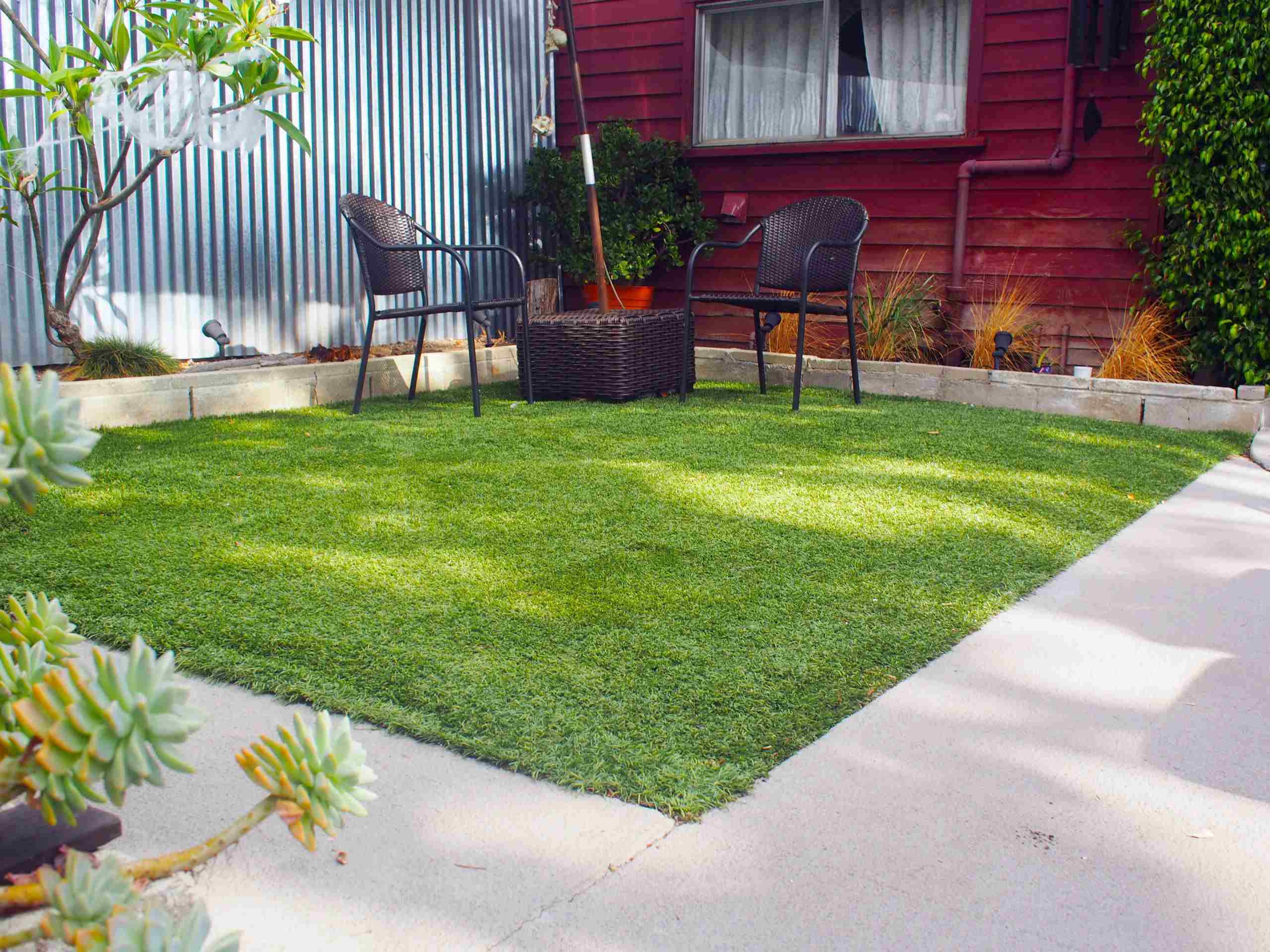

Garden Design
How Much Is It To Turf A Backyard
Published: August 5, 2023
Looking to transform your backyard? Discover the cost of turfing your outdoor space with professional landscape design services. Create the perfect oasis with just the right amount of greenery.
(Many of the links in this article redirect to a specific reviewed product. Your purchase of these products through affiliate links helps to generate commission for Chicagolandgardening.com, at no extra cost. Learn more)
Table of Contents
Introduction
Welcome to the world of landscaping, where nature meets creativity to transform your outdoor space into a stunning oasis. If you’re looking to enhance your backyard with a lush and green environment, turfing can be a fantastic option. Turfing involves the process of laying down a carpet of natural or artificial grass, instantly transforming your backyard into a functional and visually appealing area.
Turfing is a popular choice among homeowners for several reasons. Not only does it provide an instant boost to the aesthetics of your property, but it also offers a low-maintenance solution compared to traditional grass seeding. Additionally, turf is durable, versatile, and can withstand heavy traffic, making it ideal for children, pets, and outdoor activities.
However, before embarking on your turfing journey, it’s essential to understand the factors and considerations involved in the process. From the types of turf available to the costs and maintenance requirements, this article will guide you through everything you need to know about turfing your backyard.
Whether you have a small urban garden or a sprawling lawn, turfing can bring life, vibrancy, and functionality to any outdoor space. So, let’s dive into the details and discover the wonders that turfing can bring to your backyard!
Factors Affecting the Cost of Turfing a Backyard
Turfing your backyard comes with various factors that can impact the overall cost of the project. It’s important to consider these factors to ensure you have a clear understanding of what to expect financially. Here are the key factors that influence the cost of turfing:
- Size of the Area: The size of your backyard is one of the primary factors affecting the cost. The larger the area, the more turf you will need, resulting in higher expenses. Turf is typically sold per square meter, so it’s crucial to accurately measure your space to determine the quantity required.
- Type of Turf: There are various types of turf available, ranging from standard varieties to premium options. The choice of turf will impact the cost, with higher-quality and specialist varieties generally being more expensive. Additionally, factors such as drought resistance, shade tolerance, and maintenance requirements can influence the price.
- Site Preparation: The condition of your backyard before turfing plays a significant role in the cost. If the area requires extensive preparation, such as removing existing grass, clearing debris, leveling the ground, or improving drainage, it will add to the overall expenses. Poor soil quality may necessitate soil amendment, which can also impact the cost.
- Accessibility: The accessibility of your backyard can affect the price, especially for larger projects where equipment and materials need to be transported to the site. If there are narrow entryways, limited parking, or other obstacles that make it challenging for the turfing team to access the area, it may involve additional labor and equipment costs.
- Additional Features: If you have any additional features in your backyard, such as slopes, curves, or intricate landscaping elements, the cost of turfing may be higher. These features require more attention to detail and may require additional time and effort to properly lay the turf.
It’s important to keep in mind that the cost of turfing a backyard can vary significantly depending on these factors. It’s advisable to consult with a professional landscaper or turf supplier to get an accurate estimate based on your specific requirements. By considering these factors, you can budget appropriately and ensure a smooth and successful turfing project without any surprises along the way.
Types of Turf Available
When it comes to turfing your backyard, you have a range of options to choose from. Each type of turf offers unique characteristics and advantages, so it’s essential to understand the different options available before making a decision. Here are some popular types of turf:
- Standard Turf: Standard turf is a cost-effective option that is suitable for most backyard applications. It consists of a blend of hard-wearing grass species that provide a durable and attractive surface. Standard turf is relatively easy to maintain and is a popular choice for general use areas and family gardens.
- Shade-Tolerant Turf: If your backyard has areas with limited sunlight, such as under trees or near buildings, shade-tolerant turf is a great option. This type of turf is specially formulated to thrive in shady conditions, ensuring that your lawn remains green and healthy despite the lack of direct sunlight.
- Drought-Resistant Turf: In regions with dry and arid climates, drought-resistant turf is an excellent choice. This type of turf is designed to withstand long periods without water, making it a low-maintenance option. Drought-resistant turf often features grass species with deep root systems that can access water stored deeper in the soil.
- Buffalo Turf: Buffalo grass is a popular choice for its robust nature and ability to withstand heavy foot traffic. It has a thick, lush appearance and is ideal for areas where children and pets play. Buffalo turf is known for being highly resilient and can handle challenging conditions, including heat and drought.
- Specialist Turf: For specific landscaping needs, you may opt for specialist turf varieties. These can include ornamental grasses for decorative purposes, putting green turf for creating a mini-golf course, or even artificial turf for low-maintenance and long-lasting results.
Each type of turf has distinct characteristics in terms of appearance, durability, maintenance requirements, and suitability to specific conditions or usage. Consult with a professional landscaper or turf supplier to determine the most suitable type of turf for your backyard based on factors such as climate, usage patterns, and aesthetic preferences. By selecting the right turf, you can create a beautiful and functional outdoor space that meets your needs and exceeds your expectations.
Preparation for Turfing
Proper preparation is essential for a successful turfing project. The preparatory steps ensure that the ground is ready to support the turf and promote healthy growth. Here are the key steps involved in preparing your backyard for turfing:
- Clear the Area: Begin by clearing the area of any existing vegetation, including grass, weeds, and debris. Use a shovel, a rake, or a turf cutter to remove the top layer of vegetation, ensuring a clean surface for the new turf.
- Level the Ground: Assess the ground for any uneven or lumpy areas and make necessary adjustments. Use a garden rake or a landscaping tool to level the ground, ensuring a flat and even surface. This helps prevent water pooling and ensures a smooth turf installation.
- Improve Soil Quality: Test the soil to determine its pH level, nutrient content, and overall quality. Based on the results, you may need to amend the soil with organic matter or fertilizers to create an optimal growing environment for the turf. Follow the recommendations provided by a soil testing kit or consult with a professional landscaper for guidance.
- Address Drainage: Adequate drainage is critical for the health of your turf. If your backyard has poor drainage, consider incorporating drainage systems such as French drains or installing a layer of gravel or sand beneath the turf to facilitate water movement and prevent waterlogging.
- Compact the Soil: Use a roller or a mechanical compactor to compact the soil lightly. This helps to create a firm and stable surface for the turf and reduces the risk of uneven settling or shifting.
- Apply a Pre-Turf Fertilizer: Before laying the turf, apply a pre-turfing fertilizer to provide essential nutrients for the future growth of the lawn. Follow the instructions on the packaging to ensure the correct application rate.
- Water the Area: Prior to turf installation, thoroughly water the prepared area to moisten the soil. This helps create a favorable environment for the turf roots to establish and encourages healthy growth after installation.
Proper preparation is crucial to ensure the long-term success and health of your new turf. By taking the time to prepare your backyard correctly, you provide the ideal foundation for the turf to thrive, resulting in a lush and vibrant lawn that will enhance the beauty of your outdoor space for years to come.
Turfing Process Step by Step
The turfing process involves several steps to ensure a smooth and successful installation of the turf. Here is a step-by-step guide to help you understand the process:
- Start with Fresh Turf: Obtain fresh turf from a reputable supplier or garden center. It’s crucial to lay the turf as soon as possible after delivery to maintain its freshness and prevent it from drying out.
- Begin at One Corner: Start the turfing process at one corner of your backyard. Unroll the first piece of turf, ensuring it fits tightly against the edge of the area.
- Continue Laying the Turf: Lay subsequent pieces of turf, staggering the joints to create a seamless appearance. Avoid stretching the turf, as this can lead to gaps and uneven growth.
- Use a Sharp Knife: As you lay the turf, use a sharp knife or turfing spade to trim and shape the turf around any obstructions, such as trees, flower beds, or pathways.
- Press the Turf Down Firmly: Once all the turf is laid, use a roller or simply walk over the turf to ensure it is in firm contact with the prepared soil. This helps to eliminate air pockets and promotes good root-to-soil contact.
- Water the Turf: After installation, thoroughly water the turf to ensure it stays hydrated and aids in the establishment process. Continue to water the turf regularly, especially in the initial weeks, to help the roots penetrate the soil.
- Avoid Traffic on the Turf: Minimize foot traffic on the newly laid turf for the first few weeks to allow it to settle and establish. This will help prevent damage and ensure a healthier lawn in the long run.
- Maintain the Turf: Follow proper maintenance practices for your turf, such as regular watering, mowing, and fertilizing, to keep it healthy and vibrant. Consult a professional landscaper or turf supplier for specific care instructions based on the type of turf you have chosen.
By following these steps, you can ensure a successful turfing process and enjoy a beautiful, well-established lawn in your backyard. Remember, proper installation and maintenance are key to a lush and thriving turf that will become the centerpiece of your outdoor living space.
Maintenance and Care for a Turfed Backyard
Maintaining a well-kept and healthy turf requires regular care and attention. By implementing a proper maintenance routine, you can ensure your turfed backyard thrives and remains beautiful throughout the year. Here are essential tips for the maintenance and care of a turfed backyard:
- Watering: Adequate and consistent watering is crucial for the health of your turf. Water deeply, but infrequently, to encourage deep root growth. Watering in the morning or evening, when temperatures are cooler, helps reduce water evaporation and allows the turf to absorb moisture effectively.
- Mowing: Regular mowing helps maintain an even and manicured appearance for your turf. Set your mower blades to the appropriate height for the turf type and avoid cutting more than one-third of the grass blade at a time. This promotes healthy growth and minimizes stress on the turf.
- Fertilizing: Apply a suitable turf fertilizer according to the recommended schedule and guidelines. Fertilizers provide essential nutrients that support the health and growth of the turf. However, be cautious not to over-fertilize, as it can lead to excessive growth and potential damage.
- Weeding: Regularly inspect your turf for any weeds and promptly remove them as soon as they appear. Regular weeding prevents weed competition and ensures the turf receives maximum nutrients and water.
- Aerating: Over time, the soil beneath the turf can become compacted, hindering root growth and water absorption. Aerating involves creating small holes in the turf and soil to improve air circulation and soil penetration. This should be done periodically, especially in high-traffic areas.
- Pest and Disease Control: Monitor your turf for any signs of pests or diseases. If necessary, take appropriate actions to control and mitigate the issue. Consult a professional landscaper or turf supplier for advice on pest and disease prevention and treatment.
- Seasonal Care: Different seasons require different care for your turf. In hot summer months, additional watering may be needed to prevent drought stress. In cooler seasons, adjust your watering and mowing routine accordingly. Prepare your turf for winter by removing leaves and debris to prevent disease and mowing it slightly shorter.
- Regular Inspections: Take the time to inspect your turf regularly, looking for any signs of stress, compaction, or other issues that may require attention. Addressing problems early can prevent them from escalating and help maintain the overall health of your turfed backyard.
By following these maintenance practices and providing attentive care, you can ensure a vibrant and thriving turf that enhances the beauty of your backyard. Remember, each turf type may have specific maintenance requirements, so consult with professionals or suppliers for detailed guidance tailored to your specific turf selection.
Cost Breakdown of Turfing a Backyard
Turfing a backyard involves various expenses, including the cost of materials, labor, and additional services. Understanding the cost breakdown can help you budget effectively for your project. Here’s a breakdown of the costs involved in turfing a backyard:
- Turf Materials: The cost of turf materials is a significant factor in the overall expenses. The price of turf varies based on factors such as the type of turf, the quality, and the amount needed. Turf is typically sold per square meter, so calculate the required quantity based on the size of your backyard.
- Preparation and Groundwork: Preparing the ground for turfing may involve expenses such as soil testing, soil amendments, and leveling. Additional costs may arise if there is a need for clearing existing vegetation or improving drainage. These costs depend on the condition of your backyard and the amount of work required.
- Labor Costs: If you choose to hire a professional landscaper or turfing team, labor costs will affect the overall expense. Labor costs can vary depending on the complexity of the project, the size of the area, and regional labor rates. Obtaining quotes from different professionals and comparing them can help you get a clear idea of labor expenses.
- Additional Services: Depending on your specific requirements, additional services may incur extra costs. For example, if you need equipment rental, soil delivery, or waste removal services, these would be additional expenses to consider when budgeting for your turfing project.
- Maintenance and Care: After installation, ongoing maintenance and care also contribute to the overall cost of turfing. This includes expenses such as fertilizers, pest control, equipment rental for mowing, and watering costs. The frequency and extent of maintenance will depend on factors such as the type of turf and your personal preferences.
It’s important to note that costs can vary based on location, project complexity, and specific requirements. To get an accurate estimate, consult with landscaping professionals or turf suppliers who can provide detailed quotes based on your specific needs.
By considering the cost breakdown and budgeting effectively, you can ensure that you have a realistic understanding of the expenses involved in turfing your backyard. This will help you plan your project accordingly and ensure a successful outcome within your desired budget.
DIY vs Hiring a Professional Turfer
When it comes to turfing a backyard, one crucial decision to make is whether to tackle the project as a DIY endeavor or hire a professional turfer. Both options have their advantages and considerations to keep in mind. Here’s a comparison between DIY and hiring a professional turfer to help you make an informed decision:
DIY Turfing:
Opting for a DIY approach can be enticing for those who enjoy hands-on projects and want to save money. Some advantages of DIY turfing include:
- Cost Savings: By undertaking the project yourself, you can potentially save on labor costs associated with hiring a professional turfer.
- Sense of Achievement: Completing the project yourself can provide a great sense of accomplishment and pride in transforming your backyard.
- Flexibility: You have full control over the schedule, materials, and process, allowing you to work at your own pace and make adjustments as needed.
However, there are also considerations and potential challenges with DIY turfing:
- Time and Effort: Turfing can be labor-intensive and time-consuming, especially if you’re unfamiliar with the process. It requires proper preparation, installation, and ongoing maintenance.
- Limited Expertise: Lack of experience and knowledge in turfing may result in mistakes or subpar results. It’s important to thoroughly research and educate yourself on the proper techniques and best practices.
- Economic Trade-Offs: While DIY may save on labor costs, there may be additional expenses for equipment rental, soil amendments, and potential corrections if errors are made along the way.
Hiring a Professional Turfer:
Enlisting the expertise of a professional turfer offers several benefits that can outweigh the cost considerations:
- Expertise and Experience: Professional turfers have the knowledge, skills, and experience to ensure proper site preparation, turf installation, and maintenance. They can provide guidance, recommendations, and ensure a high-quality result.
- Efficiency and Time Savings: Professional turfing teams are equipped with the required tools, equipment, and manpower to efficiently complete the project. They can save you time and effort, ensuring a faster completion and a properly installed turf.
- Quality Assurance: Professionals can provide warranties and guarantees for their work, giving you peace of mind. They are experienced in handling various challenges and can deliver a seamless and visually appealing turf installation.
However, hiring a professional turfer also has considerations:
- Higher Cost: Hiring professionals will involve labor costs and potentially higher material expenses. It’s essential to obtain multiple quotes and compare services to find a reputable and cost-effective option.
- Limited Control: While professionals bring expertise, you may have less direct control over every aspect of the project compared to a DIY approach.
Ultimately, the decision between DIY and hiring a professional turfer depends on your budget, time availability, comfort level with DIY projects, and the complexity of the project. Consider your skill level, resources, and desired outcome to make the best choice for your turfed backyard.
Conclusion
Turfing a backyard can transform your outdoor space into a beautiful and functional area that you can enjoy for years to come. From enhancing the aesthetics of your property to providing a low-maintenance solution, turfing offers numerous benefits. Throughout this article, we have explored the factors affecting the cost of turfing, the types of turf available, the preparation process, the step-by-step turfing process, maintenance and care tips, and the considerations between DIY and hiring a professional turfer.
As you embark on your turfing journey, it’s essential to consider factors such as the size of your backyard, the type of turf that suits your needs, the necessary groundwork, and ongoing maintenance requirements. Understanding the costs involved, whether you choose to tackle the project yourself or hire a professional turfer, will help you plan your budget and make an informed decision that aligns with your resources and preferences.
Remember, turfing is a multi-step process that requires careful planning, attention to detail, and regular maintenance to ensure the longevity and vitality of your turf. Taking the time to properly prepare the ground, select the right type of turf, and follow maintenance guidelines will result in a verdant and inviting backyard.
Whether you choose to embark on a DIY turfing adventure or enlist the expertise of a professional, the end result will be a stunning and functional outdoor space that provides a pleasant and relaxing environment for you, your family, and your guests to enjoy.
